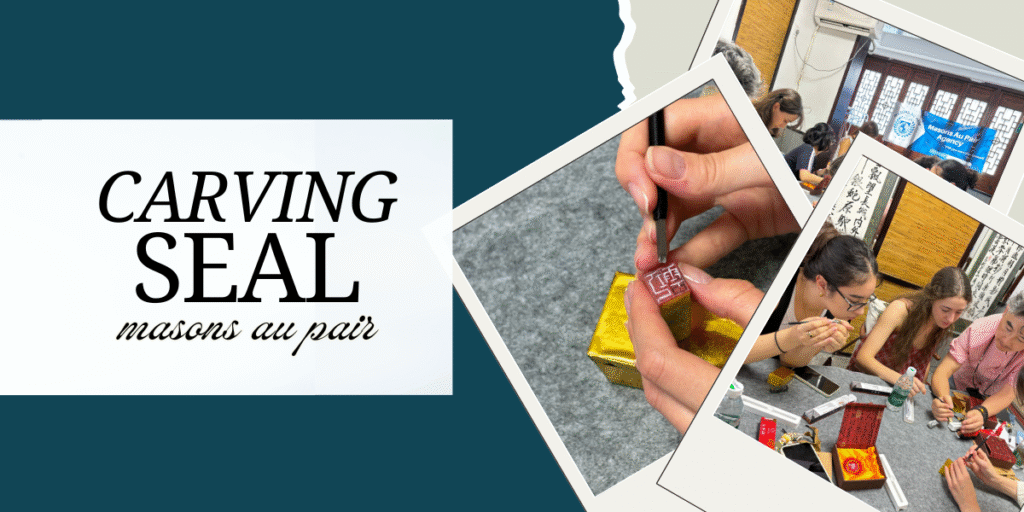Yesterday morning, Masons Au Pair organized a Traditional Chinese Seal Carving Craftsmanship Workshop in Chengdu, giving our au pairs an exclusive opportunity to explore one of the most ancient Chinese arts. Known in Chinese as zhuanke (篆刻), this traditional art form has been practiced for over three thousand years, tracing its origins back to the Shang dynasty and flourishing through the Han dynasty, Tang dynasty, Song dynasty, Yuan dynasty, and Qing dynasty, before continuing to inspire modern China.
In ancient China, personal seals were far more than decorative objects — they were powerful symbols of identity, authority, and artistry deeply embedded in Chinese civilization. Emperors, Confucius-inspired scholars, and renowned Chinese artists used them to sign imperial decrees, authenticate Chinese paintings, and immortalize their names throughout the history of China. By combining calligraphy, rituals, and cultural values, seal carving became a timeless tradition that reflects the essence of Imperial China and its thousand-year-old heritage.
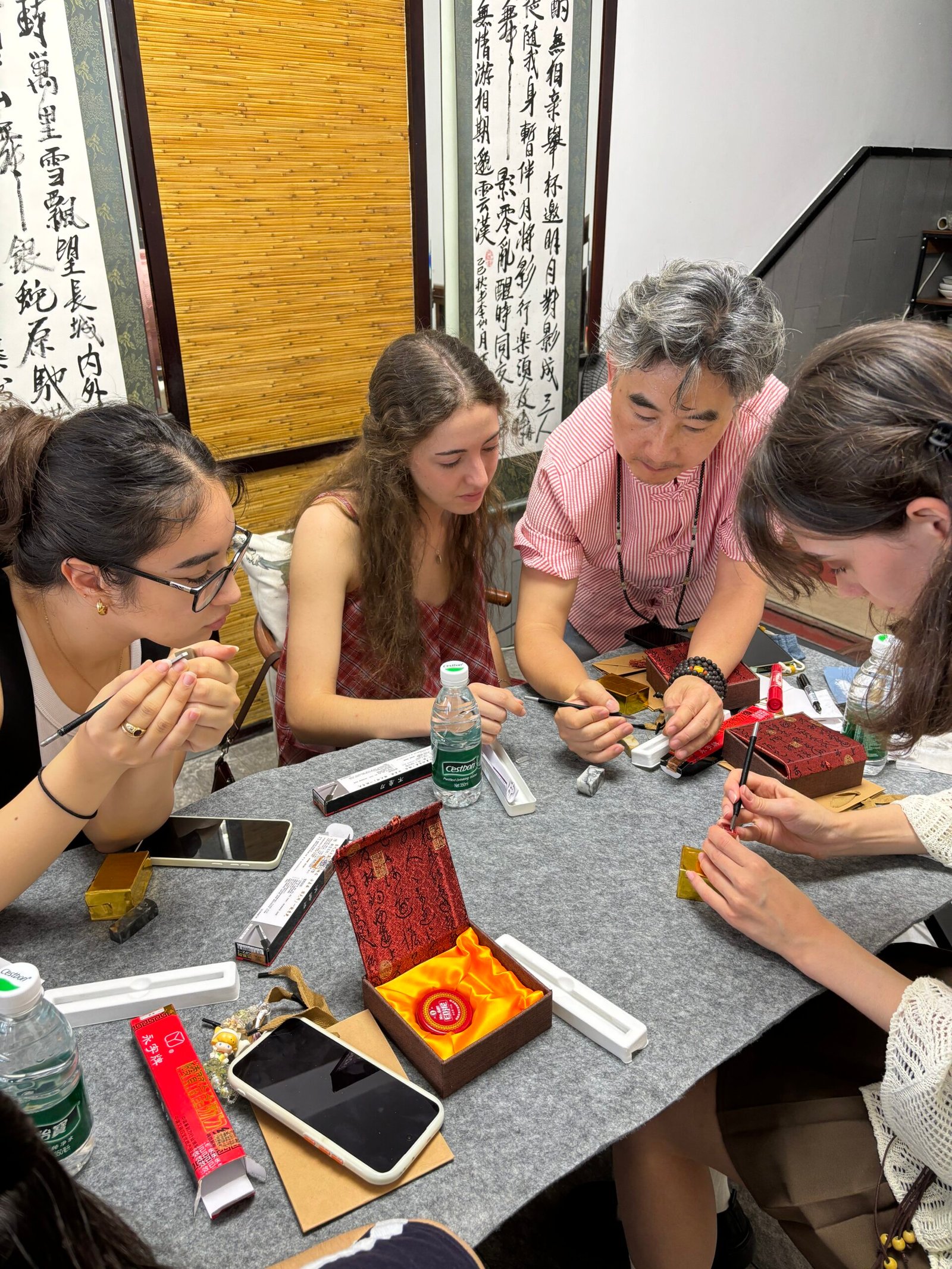
Discovering the Art of Traditional Chinese Seal Carving
The workshop began with a captivating journey through the history of Chinese seals, an ancient art form that has existed for more than 3,000 years and remains deeply rooted in the history of China. From the Han dynasty and Tang dynasty to the Ming dynasty, Yuan dynasty, and Qing dynasty, these personal seals were regarded as essential symbols of identity, authority, and artistic expression. Emperors, Confucius-inspired scholars, and celebrated Chinese calligraphers used them to sign imperial edicts, authenticate Chinese paintings, and immortalize their names across centuries, leaving a lasting imprint on Chinese civilization and shaping the essence of Imperial China.
During the event, our skilled Chinese craftsmen shared how each stone seal is meticulously designed, combining various calligraphy styles with traditional engraving techniques carefully passed down through generations. Participants discovered the wide range of materials used — from soft stones and bamboo-carved seals to jade, bronze, lacquer, and even porcelain — and learned how the shape, size, and color of each seal carry profound symbolic meaning in Chinese heritage. These artistic choices reflect values rooted in Confucianism, Buddhism, and Taoism, while connecting seal carving to broader elements of Chinese architecture, sculpture, and landscape painting, all of which have influenced Asian art for thousands of years.
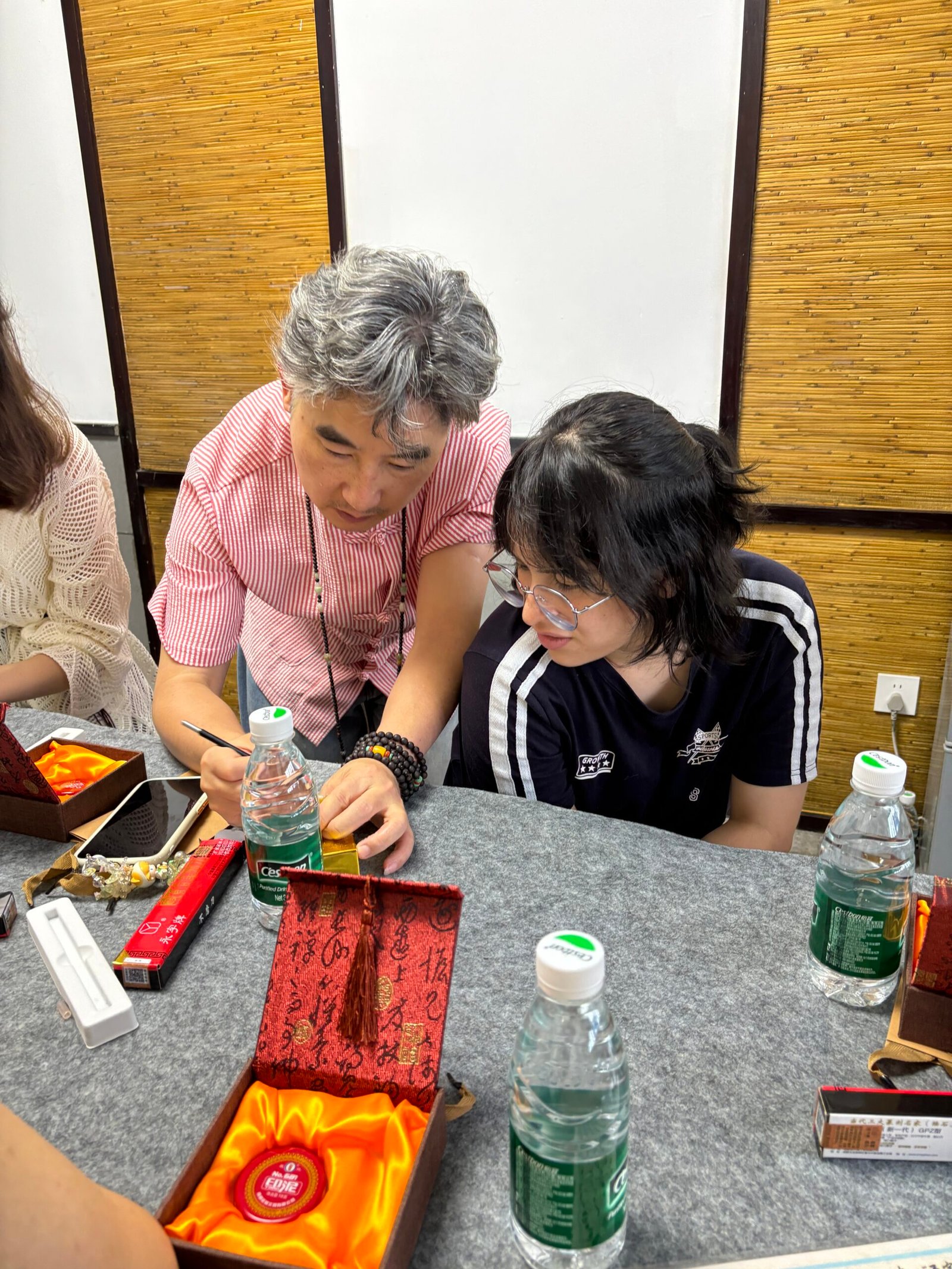
A Hands-On Workshop for Our Au Pairs
Guided by experienced Chinese artisans, participants had the unique opportunity to work with traditional tools — including fine chisels, engraving knives, and polishing stones — to carve their own Chinese names into small stone blocks. This hands-on workshop allowed them to step into the shoes of ancient craftsmen from the Han dynasty, Tang dynasty, Song dynasty, and even the Yuan dynasty, connecting directly with an artistic tradition that has been carefully preserved and passed down through countless Chinese dynasties for thousands of years.
This practical session offered a rare opportunity to experience the delicate balance between precision and creativity that defines traditional Chinese seal carving. Participants also discovered how engraving techniques were influenced by other forms of Chinese art such as painting, pottery, porcelain work, and sculpture, revealing the close ties between seal carving and Imperial China’s artistic heritage.
Each participant proudly left with a personalized stone seal — a unique souvenir and a lasting symbol of their connection to Chinese culture, calligraphy, and intangible cultural heritage. For many, it was not only an artistic achievement but also a deeper encounter with the philosophy, rituals, and aesthetic principles embedded in Chinese civilization and shaped by Confucianism, Buddhism, and Taoism.
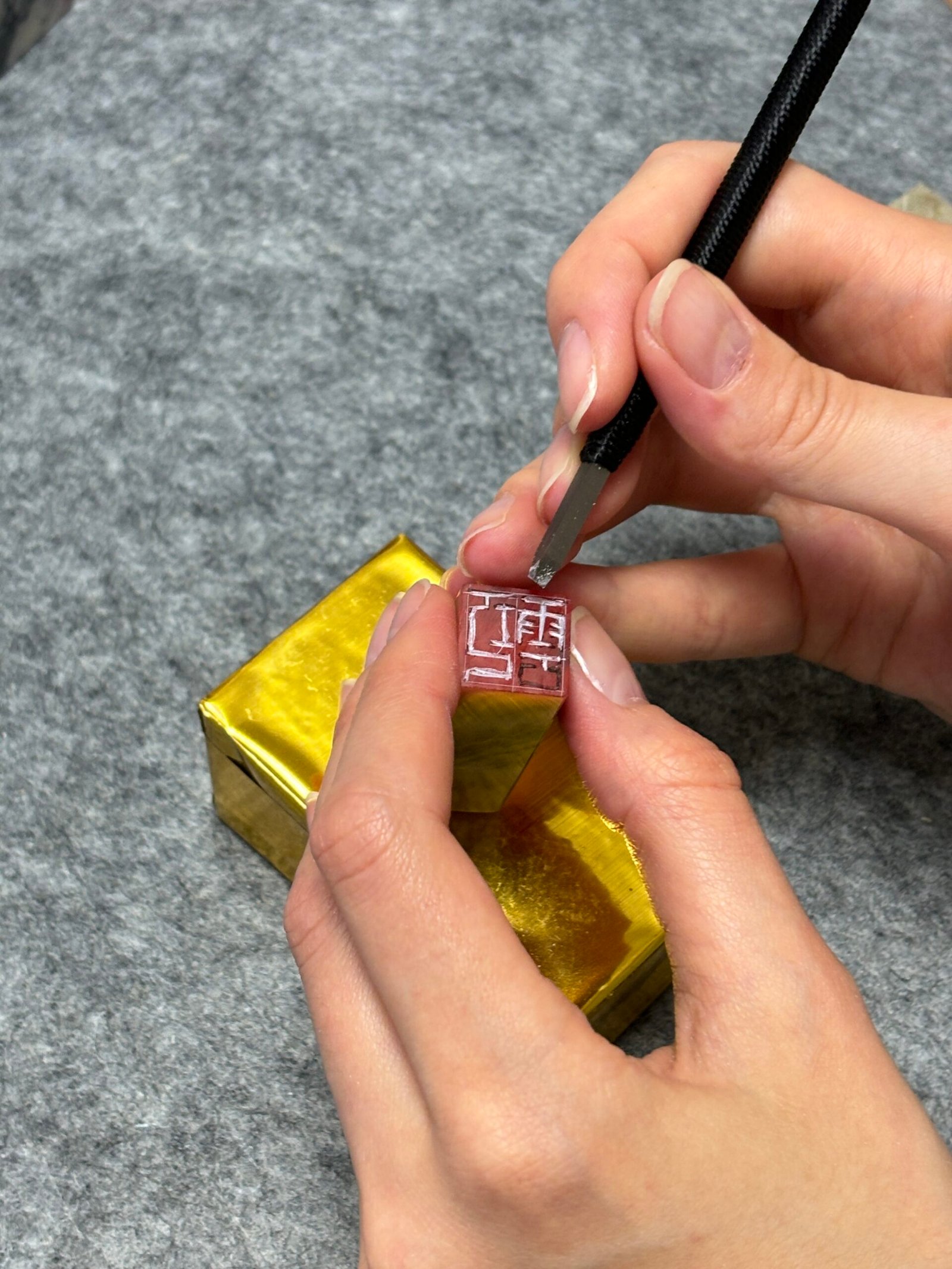
Connecting with Chinese Heritage
Beyond the technical skills, this workshop offered a fascinating journey into Chinese philosophy, artistic traditions, and the profound symbolism behind zhuanke (篆刻) — the traditional Chinese seal carving art. Recognized as a vital part of China’s intangible cultural heritage, this ancient practice blends Chinese calligraphy, symbolism, and meticulous craftsmanship, carefully preserved and passed down through countless generations since the Zhou dynasty and Han dynasty, flourishing across the Warring States period and the great eras of Imperial China.
By engaging directly with this ancient Chinese art form, our au pairs gained a deeper understanding of Chinese history, Confucian values, Taoist aesthetics, and Buddhist influences that have shaped not only Chinese civilization but also the foundations of East Asian culture. They discovered how something as small as a personal stone seal can embody identity, social status, and personal expression across the dynasties — from the Tang dynasty and Song dynasty to the Ming dynasty, Yuan dynasty, Qing dynasty, and even into modern China. Through this lens, seal carving becomes more than an art: it is a living archive of Chinese beliefs, rituals, and aesthetic values spanning thousands of years.
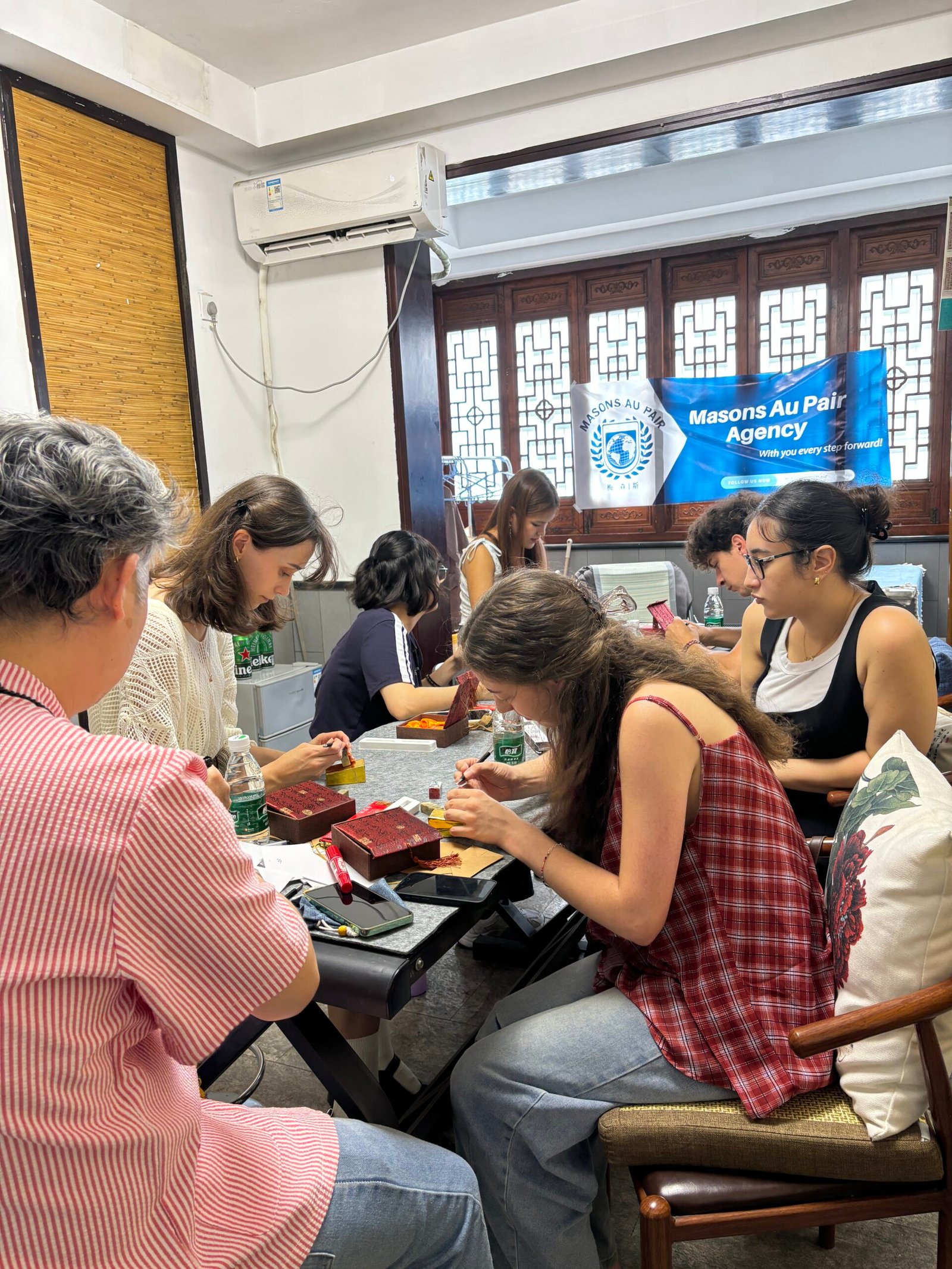
Masons Au Pair and Cultural Exchange in China
At Masons Au Pair, we believe that being an au pair in China is far more than simply living abroad — it’s about immersing yourself in Chinese traditions, discovering ancient rituals, exploring temples, and building lasting relationships with the Chinese people who call this country home. It’s an invitation to experience Imperial China’s heritage while embracing the rhythm of modern China.
Through unique workshops like the Traditional Chinese Seal Carving Craftsmanship, our participants:
Experience hands-on cultural learning by practicing ancient Chinese arts that date back thousands of years.
Improve their Mandarin skills while interacting directly with local Chinese artisans and discovering the artistry behind Chinese characters.
Explore the beauty of Chinese festivals, temples, crafts, and heritage, from calligraphy and landscape painting to traditional rituals and the architectural wonders of Chinese civilization.
This event reflects our ongoing mission: to create unforgettable opportunities where cultural exchange meets personal growth. By engaging with Chinese civilization through its arts, language, philosophy, and even its historical landmarks like the Great Wall of China and the Yangtze River region, our au pairs gain a deeper connection with the country and its people — making their stay in China a truly transformative experience.
A Memorable Morning for All Participants
The atmosphere during the workshop was filled with laughter, curiosity, and creativity. As participants carefully engraved their Chinese names onto their personalized stone seals, they exchanged stories, practiced their Mandarin, and uncovered fascinating insights into Chinese traditions, calligraphy styles, and cultural heritage. It was a unique moment where language learning, hands-on artistry, and immersion in Chinese rituals came together seamlessly, bridging the gap between ancient traditions and modern China.
Many participants expressed how proud they felt to create their own personalized seal, describing it as a piece of living history and a symbolic connection to Chinese civilization and its 3,000-year-old artistic traditions. They discovered how seal carving reflects not just identity and status, but also ties to Chinese painting, sculpture, porcelain craftsmanship, and even Chinese architecture — elements deeply influenced by Confucianism, Taoism, and Buddhism.
For several of our au pairs, this Traditional Chinese Seal Carving Workshop became one of the highlights of their journey in China — a perfect blend of art, Mandarin practice, cultural exchange, and immersion in Imperial China’s heritage that makes their au pair experience in China truly unforgettable.
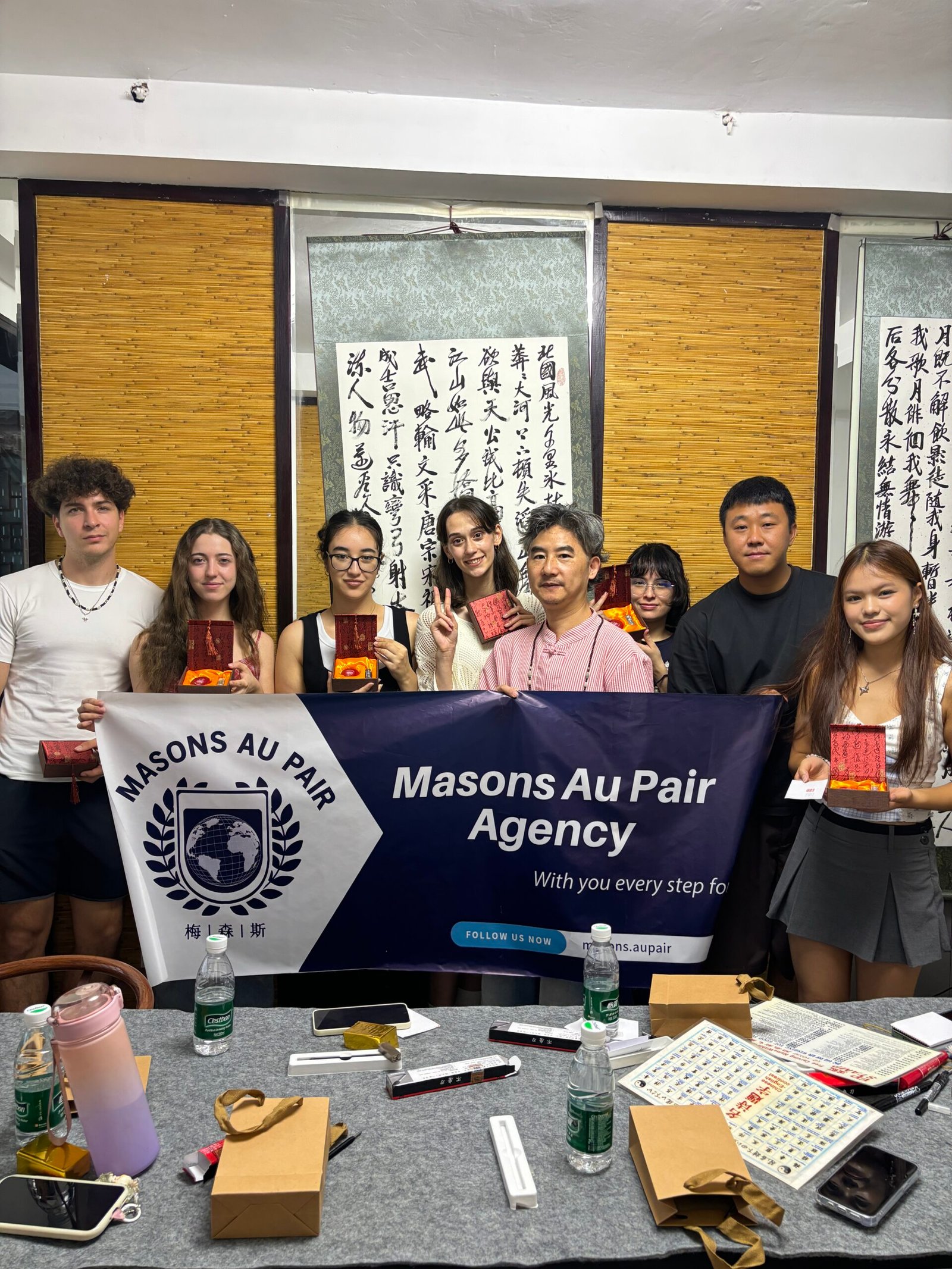
Conclusion
The Traditional Chinese Seal Carving Craftsmanship Workshop was more than just an event — it was a genuine invitation to connect with Chinese heritage and explore one of the most ancient art forms of Chinese civilization. Through a unique blend of history, calligraphy, artistry, and hands-on experience, our au pairs not only created unforgettable memories but also deepened their understanding of Chinese culture, traditional art forms, and the intangible cultural heritage that has shaped China’s identity for more than 3,000 years.
By linking seal carving to the broader history of China, participants also discovered how this ancient art reflects the evolution of Chinese painting, porcelain craftsmanship, pottery techniques, lacquer art, and landscape painting, as well as the philosophical influences of Confucianism, Taoism, and Buddhism. The workshop became a doorway into Imperial China’s heritage, revealing the cultural layers preserved through the Silk Road, temples, and iconic landmarks such as the Great Wall of China and the Yangtze River region.
At Masons Au Pair, we are proud to organize such immersive cultural activities that enrich the au pair experience in China. Every stay becomes a transformative journey of learning, creativity, and cultural exchange, allowing our participants to connect deeply with local traditions, explore Chinese rituals, and experience life in China in its most authentic form — where ancient heritage meets modern culture.

